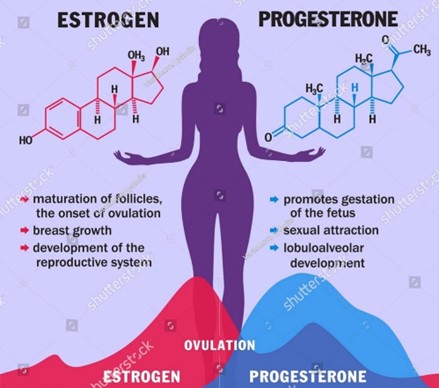A nurse is caring for a client who is postpartum and asks, "When will my breast milk come in?" Which of the following responses should the nurse make?
In 3 to 5 days after delivery
In 6 to 8 days after delivery
Within 2 days after delivery
In about 10 days after delivery
The Correct Answer is A
Choice A reason: In 3 to 5 days after delivery is correct, as this is the average time for breast milk production to begin after birth. Breast milk production is stimulated by the drop in progesterone levels that occurs after the placenta is delivered, as well as by the suckling of the baby. The nurse should encourage the client to breastfeed frequently and effectively to promote milk production and prevent engorgement.
Choice B reason: In 6 to 8 days after delivery is incorrect, as this is a longer than average time for breast milk production to begin after birth. Breast milk production usually begins within the first week after birth, although it may vary depending on individual factors. The nurse should assess the client for any factors that may delay or inhibit milk production, such as stress, fatigue, pain, or medication.
Choice C reason: Within 2 days after delivery is incorrect, as this is a shorter than average time for breast milk production to begin after birth. Breast milk production usually begins within the first week after birth, although it may vary depending on individual factors. The nurse should educate the client that before breast milk comes in, the breasts produce colostrum, which is a thick, yellowish fluid that contains antibodies and nutrients for the baby.
Choice D reason: In about 10 days after delivery is incorrect, as this is a longer than average time for breast milk production to begin after birth. Breast milk production usually begins within the first week after birth, although it may vary depending on individual factors. The nurse should assess the client for any factors that may delay or inhibit milk production, such as stress, fatigue, pain, or medication.

Nursing Test Bank
Naxlex Comprehensive Predictor Exams
Related Questions
Correct Answer is A
Explanation
Choice A reason: Fundal consistency is correct, as this finding can indicate the effectiveness of oxytocin in stimulating uterine contraction and preventing postpartum hemorrhage. Oxytocin is a uterotonic agent that can enhance or augment uterine contractility and involution. The nurse should monitor the fundal height, consistency, and position and report any signs of uterine atony or excessive bleeding.
Choice B reason: Fetal heart rate is incorrect, as this finding is not relevant for a client who has already delivered the baby. Fetal heart rate can indicate the fetal well-being and response to labor, but it is not affected by oxytocin administration after birth. The nurse should monitor the newborn's vital signs and appearance and report any signs of distress or infection.
Choice C reason: Pulse rate is incorrect, as this finding is not specific for evaluating the effectiveness of oxytocin. Pulse rate can indicate the client's hemodynamic status and response to blood loss, but it can be influenced by many other factors, such as pain, anxiety, fever, or dehydration. The nurse should monitor the client's vital signs and fluid balance and report any signs of shock or infection.
Choice D reason: Urinary output is incorrect, as this finding is not specific for evaluating the effectiveness of oxytocin. Urinary output can indicate the client's renal function and fluid balance, but it can be influenced by many other factors, such as fluid intake, bladder distension, or epidural anesthesia. The nurse should monitor the client's intake and output and report any signs of oliguria or retention.
Choice E reason: Blood pressure is incorrect, as this finding is not specific for evaluating the effectiveness of oxytocin. Blood pressure can indicate the client's hemodynamic status and response to blood loss, but it can be influenced by many other factors, such as pain, anxiety, preeclampsia, or medication. The nurse should monitor the client's vital signs and fluid balance and report any signs of hypotension or hypertension.
Correct Answer is B
Explanation
Choice B reason:
A fundus that is elevated and displaced from the midline indicates a full bladder, which can interfere with uterine contraction and increase the risk of hemorrhage. The nurse should assist the client to void or catheterize her if necessary.
Choice A reason:
Moderate swelling of the labia is a normal finding after vaginal delivery, and does not indicate a need to urinate. The nurse should apply ice packs and perineal pads to reduce edema and discomfort.
Choice C reason:
Moderate lochia rubra is a normal finding during the first 24 hr postpartum, and does not indicate a need to urinate. The nurse should monitor the amount and color of lochia, and change the perineal pads as needed.
Choice D reason:
A blood pressure of 130/84 mm Hg is within the normal range for a postpartum client, and does not indicate a need to urinate. The nurse should monitor the blood pressure for signs of hypertension or hypotension, which can indicate complications such as preeclampsia or hemorrhage.
Whether you are a student looking to ace your exams or a practicing nurse seeking to enhance your expertise , our nursing education contents will empower you with the confidence and competence to make a difference in the lives of patients and become a respected leader in the healthcare field.
Visit Naxlex, invest in your future and unlock endless possibilities with our unparalleled nursing education contents today
Report Wrong Answer on the Current Question
Do you disagree with the answer? If yes, what is your expected answer? Explain.
Kindly be descriptive with the issue you are facing.
